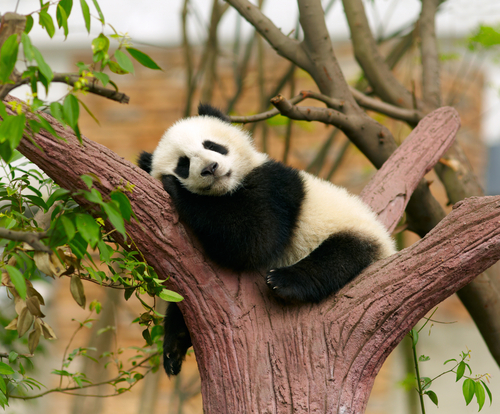Friday evening, Washington, D.C. gained a new squealing, wriggling pink mass born for the spotlight. No, it’s not a fiery elected official filibustering on the House floor. It’s a 4.8-ounce baby panda. Approximately the size of a stick of butter, the as-yet-unnamed baby is already a rock star – and deservedly so.
Having grown up in D.C. – and become quite an animal-lover – I admit that I’m fully aboard the panda crazy train. But I’m far from alone. Pandas are a big business for American zoos, and one that does a lot of good.
Simply hosting giant pandas is a massive undertaking for American zoos. From constructing state-of-the-art habitats to administering round-the-clock care and monitoring the development and behavior, our wonderfully furry friends take a lot of care. On top of those basic infrastructure requirements, zoos must also pay to loan pandas from China, adding up to an average of $2.6 million per year per pair – and that’s if they don’t have a cub. With every baby panda born to an American zoo, officials must shell out an additional $600,000 in a one-time “baby tax” to the Chinese government. Add in the fact that almost half of successful panda pregnancies result in twins, and the bears might as well be eating green bills instead of bamboo.
Pandas cost about $500,000 to care for annually, according to Dennis Kelly, chief executive of Zoo Atlanta, one of four American zoos that houses pandas. The zoo’s second most expensive animal, the elephant, require just one fifth as much.
According to the Washington Post, webcams following Tai Shan, the last baby panda raised at the National Zoo, generated 21 million hits in the first year alone. Merchandising sales at the zoo rose dramatically, from $1.7 million in the first half of 2005, before the cub was born, to $3.3 million in the first half of 2006. Tai Shan products accounted for 23 percent of that total. During the first three months the charismatic baby was on display to the public, zoo admission jumped by as much as 50 percent over previous years, National Geographic reported. In fact, while 13,000 timed entry tickets for the panda’s debut were disseminated for free, all were taken within two hours and a secondary market on the Internet charged up to $500 per ticket for the free zoo.
Baby pandas pay big.
After the excitement and devastating loss of a six-day-old panda last year, the National Zoo ramped up its breeding efforts with Mei Xiang, whose new cub is only the third birth for the 15-year-old female. Impregnating pandas in captivity is incredibly challenging, particularly since females only go into estrus about once a year. Baby panda fever began before conception in 2012, with zoo officials live-tweeting Mei Xiang’s artificial insemination procedure for an hour and a half. This time around, baby panda specialists were brought in from China, and two of the zoo’s staff members were sent to China for special training in the care of newborn cubs, the Washington Post reported. Veterinarians also got particularly proactive in their attempts to impregnate Mei Xiang, performing the procedure multiple time with fresh and frozen sperm samples from both the National Zoo’s male, Tian Tian, and the San Diego Zoo’s Gao Gao. As a precaution, officials and volunteers began round-the-clock pregnancy watch and closed the panda house on August 7, when Mei Xiang’s gestation period began to end.
Rigorous breeding programs protect zoos’ investment and capitalize on the potential fanfare over these remarkable and critically endangered animals. Most of the money zoos pay to loan pandas is sent to China to preserve panda habitats, create local environmental education programs near reserves, train conservation professionals, and run reserves that house most of the pandas currently in captivity. Since U.S. Fish and Wildlife Service policies were rewritten in 1998, in order to qualify for panda import permits, American zoos have to design research programs that benefit wild pandas and help China pay for its own panda projects, according to National Geographic. As Fish and Wildlife Service official Ken Stansell told the magazine, “We had to step back and find a way to use our permit process as a conservation tool.”
Zoos are matching the governmental commitment to conservation, and it’s clearly not only about preserving the bottom line. “Nobody would ever commit this kind of money to any other species,” said David Wildt, head of the National Zoo’s reproductive sciences program, in an interview with National Geographic.


Morgan loves this story!